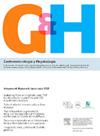Nationwide trends in colectomy rates for ulcerative colitis in Brazil: An analysis of the unified public healthcare system
IF 1.9
4区 医学
Q3 GASTROENTEROLOGY & HEPATOLOGY
引用次数: 0
Abstract
Introduction
Ulcerative colitis (UC) is a chronic inflammatory bowel disease with significant global prevalence. Despite advancements in medical management, including the widespread use of biologic agents and small molecules, approximately 15–20% of patients eventually require surgery. This study aimed to analyze colectomy and hospitalization rates for UC in Brazil from 2012 to 2022 and assess their temporal trends.
Methods
This was a retrospective, observational, population-based study using public database records from January 1, 2012, to December 31, 2022. The study included all patients with one or more diagnostic codes associated with UC (ICD-10) who underwent a UC-related surgical procedure during the study period.
Results
A total of 178,552 unique UC patients were identified. UC prevalence increased significantly, from 17.31 per 100,000 in 2012 to 84.23 per 100,000 in 2022, with an annual average percentage change (AAPC) of 15% (95% CI 14.97–15.11, p < 0.001). The Southeastern and Southern regions accounted for the highest number of cases. Among the 1374 surgical procedures identified, 69.4% were total colectomies, and 10.6% were pouch procedures. By the end of 2022, the proportion of surgeries relative to the total number of UC patients was 0.7%, with a declining trend (AAPC −11.8%; 95% CI −13.38 to −10.33, p < 0.001). Hospitalization rates also showed a significant decline over time (AAPC −14.3%; 95% CI −14.75 to −14.03, p < 0.001).
Conclusions
UC prevalence in Brazil has increased substantially over the past decade. However, colectomy rates remain low and have shown a declining trend over the same period. Additionally, there has been a notable reduction in hospitalization rates, reflecting potential improvements in UC management and disease control.
巴西溃疡性结肠炎结肠切除术率的全国趋势:对统一公共卫生保健系统的分析。
简介:溃疡性结肠炎(UC)是一种全球流行的慢性炎症性肠病。尽管医疗管理取得了进步,包括广泛使用生物制剂和小分子,但大约15-20%的患者最终需要手术治疗。本研究旨在分析2012年至2022年巴西UC的结肠切除术和住院率,并评估其时间趋势。方法:采用2012年1月1日至2022年12月31日的公共数据库记录,进行回顾性、观察性、基于人群的研究。该研究包括所有在研究期间接受UC相关外科手术的具有一个或多个UC相关诊断代码(ICD-10)的患者。结果:共发现178,552例独特的UC患者。UC患病率显著增加,从2012年的17.31 / 10万增加到2022年的84.23 / 10万,年平均百分比变化(AAPC)为15% (95% CI 14.97-15.11, p < 0.001)。东南部和南部地区的病例数最多。在确定的1374例外科手术中,69.4%为全结肠切除术,10.6%为眼袋切除术。截至2022年底,UC手术占UC患者总数的比例为0.7%,且呈下降趋势(AAPC -11.8%;95% CI为-13.38 ~ -10.33,p < 0.001)。住院率也随着时间的推移而显著下降(AAPC -14.3%;95% CI为-14.75 ~ -14.03,p < 0.001)。结论:在过去的十年中,UC在巴西的患病率大幅上升。然而,结肠切除术率仍然很低,并在同一时期呈下降趋势。此外,住院率显著降低,反映出UC管理和疾病控制方面的潜在改进。
本文章由计算机程序翻译,如有差异,请以英文原文为准。
求助全文
约1分钟内获得全文
求助全文
来源期刊

Gastroenterologia y hepatologia
GASTROENTEROLOGY & HEPATOLOGY-
CiteScore
1.50
自引率
10.50%
发文量
147
审稿时长
48 days
期刊介绍:
Gastroenterology and Hepatology is the first journal to cover the latest advances in pathology of the gastrointestinal tract, liver, pancreas, and bile ducts, making it an indispensable tool for gastroenterologists, hepatologists, internists and general practitioners.
 求助内容:
求助内容: 应助结果提醒方式:
应助结果提醒方式:


